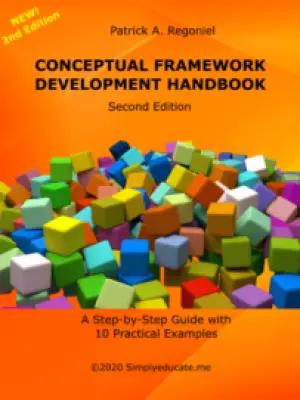
Table of Contents
Introduction to Research Methods
Research methods play a crucial role in the process of writing a research paper. They provide a systematic approach to gathering and analyzing data, ensuring that the study is conducted in a rigorous and reliable manner. By employing appropriate research methods, researchers can obtain accurate and valid results, which are essential for drawing meaningful conclusions and making informed decisions.
The importance of research methods lies in their ability to guide the entire research process. They help researchers formulate research questions, design the study, collect data, analyze findings, and interpret results. Without a well-defined research method, the research process can become disorganized and lack direction, leading to unreliable and inconclusive outcomes.
Moreover, research methods enable researchers to address specific research objectives and explore complex phenomena. They provide a framework for selecting the most suitable data collection techniques, such as surveys, experiments, interviews, or observations, depending on the nature of the research topic and the type of data required.
Summing this up, research methods are essential tools for conducting rigorous and valid research. They ensure that the research process is systematic, organized, and reliable, enabling researchers to obtain accurate and meaningful results. By understanding the importance of research methods, researchers can enhance the quality and credibility of their research papers, contributing to the advancement of knowledge in their respective fields.
5 Types of Quantitative Research Methods and Their Applications
Quantitative research methods are widely used in various fields to gather numerical data and analyze it statistically. These methods provide researchers with a structured approach to collecting and interpreting data, allowing for objective and reliable results.
In this section, we will explore five typical quantitative research methods, their applications, and the situations in which they are most appropriately used.
1. Survey Research
Survey research involves collecting data from a sample of individuals through the use of questionnaires or interviews. Surveys are commonly used to gather information about people’s opinions, attitudes, behaviors, and characteristics.
They can be conducted through various mediums, such as online surveys, telephone interviews, or face-to-face interactions. Survey research is particularly useful when studying large populations, as it allows for the collection of data from a significant number of individuals. It is often employed in market research, social sciences, and public opinion studies.
2. Experimental Research
Experimental research involves manipulating variables to determine cause-and-effect relationships. In an experimental study, researchers assign participants to different groups and expose them to different conditions or treatments.
By controlling variables and randomly assigning participants, researchers can establish causal relationships between variables.
Experimental research is commonly used in psychology, medicine, and natural sciences. For example, a pharmaceutical company may conduct an experimental study to test the effectiveness of a new drug by comparing it to a placebo.
3. Observational Research
Observational research involves observing and recording behaviors or phenomena in their natural settings. Researchers do not manipulate variables in observational studies but rather observe and document what occurs naturally.
This method is often used when it is not feasible or ethical to manipulate variables or when studying complex social interactions. Observational research is commonly employed in anthropology, sociology, and ethnography.
For instance, an anthropologist may conduct an observational study to understand the social dynamics within a particular community.
4. Correlational Research
Correlational research aims to examine the relationship between two or more variables without manipulating them. Researchers collect data on the variables of interest and analyze the degree and direction of their association.
Correlational research is useful for identifying patterns and predicting outcomes. It is commonly used in psychology, education, and economics.
For example, a researcher may conduct a correlational study to investigate the relationship between students’ study habits and their academic performance.
5. Longitudinal Research
Longitudinal research involves studying the same group of individuals over an extended period. Researchers collect data at multiple time points to examine changes and trends over time. Longitudinal research allows for the analysis of developmental processes, the study of long-term effects, and the identification of causal relationships.
Longitudinal research is commonly used in psychology, sociology, and public health. For instance, a longitudinal study may be conducted to track the physical and cognitive development of children from infancy to adulthood.
Summing this all up, quantitative research methods provide researchers with valuable tools for collecting and analyzing numerical data. Survey research is suitable for studying large populations and gathering information about people’s opinions and behaviors. Experimental research allows for the establishment of cause-and-effect relationships by manipulating variables. Observational research is useful for studying behaviors and phenomena in their natural settings. Correlational research examines the relationship between variables without manipulation. Longitudinal research tracks individuals over time to study changes and trends.
By understanding the characteristics and applications of these quantitative research methods, researchers can select the most appropriate approach for their studies and obtain reliable and meaningful results.
5 Types of Qualitative Research Methods and Their Applications
Qualitative research methods are valuable tools for exploring and understanding complex phenomena, experiences, and social interactions. Unlike quantitative research methods that focus on numerical data, qualitative research methods aim to gather rich, descriptive data that provides insights into the meanings and interpretations of individuals.
Unlike quantitative research methods that focus on numerical data, qualitative research methods aim to gather rich, descriptive data that provides insights into the meanings and interpretations of individuals.
In this section, we will explore five typical qualitative research methods, their applications, and the situations in which they are most appropriately used.
1. Ethnography
Ethnography is a qualitative research method that involves immersing oneself in a particular culture or social group to gain an in-depth understanding of their beliefs, values, behaviors, and practices. Ethnographers spend a significant amount of time observing and interacting with participants in their natural settings, often using methods such as participant observation, interviews, and document analysis.
Ethnography is particularly useful when studying cultural phenomena, social dynamics, and community practices. For example, an ethnographic study may be conducted to explore the rituals and traditions of a specific indigenous community.
2. Phenomenology
Phenomenology is a qualitative research method that focuses on understanding individuals’ subjective experiences and the meanings they attribute to those experiences. Researchers using phenomenology aim to uncover the essence of a phenomenon by exploring participants’ lived experiences through in-depth interviews and reflective analysis.
Phenomenology is commonly used in psychology, healthcare, and sociology to explore topics such as the experience of chronic illness, the meaning of spirituality, or the perception of beauty. For instance, a phenomenological study may be conducted to understand the lived experiences of individuals who have undergone a near-death experience.
3. Grounded Theory
Grounded theory is a qualitative research method that aims to develop theories or explanations based on the data collected from participants. Researchers using grounded theory start with an open mind and allow theories to emerge from the data rather than imposing preconceived ideas. They collect and analyze data simultaneously, using methods such as interviews, observations, and document analysis.
Grounded theory is particularly useful when exploring new or under-researched areas, as it allows for the development of theories grounded in participants’ perspectives. For example, a grounded theory study may be conducted to understand the process of decision-making in healthcare settings.
4. Case Study
A case study is a qualitative research method that involves an in-depth examination of a particular individual, group, organization, or event. Researchers using case study methods gather data from multiple sources, such as interviews, observations, documents, and artifacts, to provide a comprehensive understanding of the case under investigation.
Case studies are particularly useful when exploring complex phenomena or when the boundaries between the phenomenon and its context are blurred. They are commonly used in fields such as psychology, business, and education. For instance, a case study may be conducted to examine the success factors of a particular company in a competitive market.
5. Narrative Analysis
Narrative analysis is a qualitative research method that focuses on analyzing and interpreting stories or narratives shared by individuals. Researchers using narrative analysis examine the structure, content, and meaning of narratives to gain insights into individuals’ experiences, identities, and social interactions.
This method often involves transcribing and coding narratives, identifying themes, and interpreting the underlying meanings. Narrative analysis is commonly used in fields such as psychology, sociology, and literature. For example, a narrative analysis study may be conducted to explore the experiences of individuals who have survived traumatic events.
Qualitative research methods offer valuable approaches for exploring and understanding complex phenomena and social interactions.
Ethnography allows researchers to immerse themselves in a culture or social group to gain an in-depth understanding. Phenomenology focuses on understanding individuals’ subjective experiences and the meanings they attribute to those experiences. Grounded theory allows for the development of theories based on the data collected from participants. Case studies provide a comprehensive understanding of a particular individual, group, organization, or event. Narrative analysis focuses on analyzing and interpreting narratives to gain insights into individuals’ experiences and social interactions.
By understanding the characteristics and applications of these qualitative research methods, researchers can select the most appropriate approach for their studies and gain meaningful insights into the phenomena they are investigating.
6 Points in the Selection of Appropriate Research Method
When embarking on a research study, it is crucial to carefully consider the selection of the appropriate research method. The choice of research method will greatly impact the outcomes and validity of the study.
Here are six key points to consider when selecting the most suitable research method.
1. Research Objectives
Clearly define the objectives of your study. What do you aim to achieve? Are you looking to explore a phenomenon, describe a situation, or test a hypothesis? Understanding your research objectives will help guide you in selecting the most appropriate research method.
For example, if you want to explore the experiences and perceptions of individuals, qualitative research methods such as phenomenology or narrative analysis would be more suitable.
2. Research Questions
Formulate specific research questions that align with your objectives. These questions will guide your data collection and analysis. For quantitative research, you may need to develop hypotheses that can be tested using statistical analysis.
On the other hand, qualitative research methods focus on open-ended questions that allow for rich, descriptive responses.
3. Data Availability
Consider the availability and accessibility of data. Some research methods may require extensive data collection efforts, while others may rely on existing data sources.
If you have limited resources or time constraints, it may be more practical to choose a research method that utilizes existing data, such as secondary data analysis or a case study approach.
4. Sample Size
Determine the appropriate sample size for your study. This will depend on the research method and the statistical analysis you plan to use. Quantitative research methods often require larger sample sizes to ensure statistical power and generalizability.
In contrast, qualitative research methods focus on in-depth exploration of a smaller sample size, aiming for rich and detailed insights.
5. Time and Resources
Assess the time and resources available for your study. Some research methods, such as ethnography or grounded theory, require significant time commitments for data collection and analysis. Consider the feasibility of conducting the research within your available timeframe and resources.
6. Researcher Expertise
Evaluate your own expertise and skills in different research methods. Some methods may require specialized knowledge or training. It is important to select a research method that aligns with your expertise or seek collaboration with researchers who have the necessary skills.
In terms of statistical analysis, the choice of analysis will depend on the research method selected. For quantitative research methods, statistical analysis techniques such as regression analysis, t-tests, or ANOVA may be appropriate.
Qualitative research methods, on the other hand, focus on interpreting and analyzing textual or narrative data using techniques such as thematic analysis or content analysis.
Recommended References
By considering these points and aligning them with your research objectives, questions, data availability, sample size, time and resources, and researcher expertise, you can select the most appropriate research method for your study. This will ensure that your research is rigorous, valid, and provides meaningful insights into the phenomenon under investigation.
Conclusions
The previous sections have provided a comprehensive overview of different research methods and their applications. Now, let’s summarize and highlight the main points of the discussion.
Firstly, it is crucial to carefully consider the selection of the appropriate research method. This choice greatly impacts the outcomes and validity of the study. Key points to consider include research objectives, research questions, data availability, sample size, time and resources, and researcher expertise.
Research objectives help guide the selection of the most suitable research method. For example, qualitative research methods like phenomenology or narrative analysis are more suitable for exploring experiences and perceptions. On the other hand, quantitative research methods focus on testing hypotheses using statistical analysis.
Data availability is another important factor. Some research methods require extensive data collection efforts, while others rely on existing data sources. If resources or time constraints exist, utilizing existing data or adopting a case study approach may be more practical.
Sample size is determined by the research method and the statistical analysis planned. Quantitative research often requires larger sample sizes for statistical power and generalizability, while qualitative research focuses on in-depth exploration with a smaller sample size.
Time and resources should also be considered. Some research methods, like ethnography or grounded theory, require significant time commitments. It is important to assess the feasibility of conducting the research within the available timeframe and resources.
Lastly, researcher expertise plays a role in selecting the appropriate research method. Specialized knowledge or training may be required for certain methods, so it is important to align the method with the researcher’s expertise or seek collaboration with others who have the necessary skills.
By considering these points, researchers can select the most appropriate research method for their study, ensuring rigor, validity, and meaningful insights into the phenomenon under investigation.




